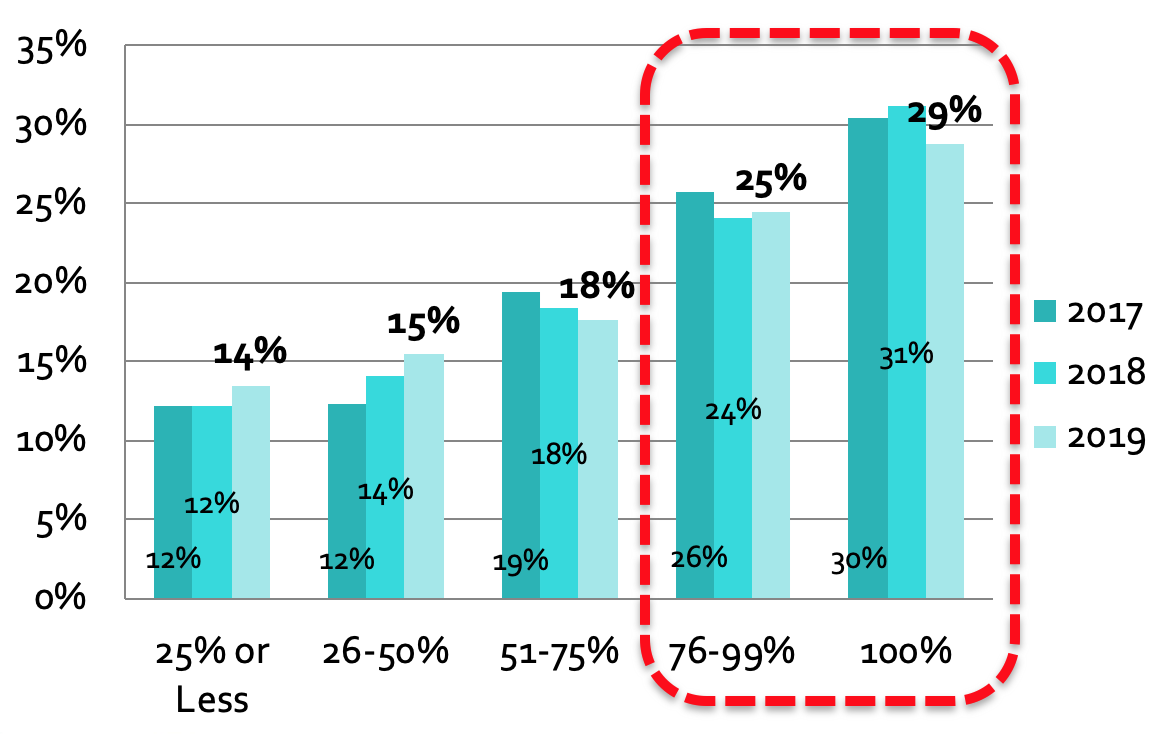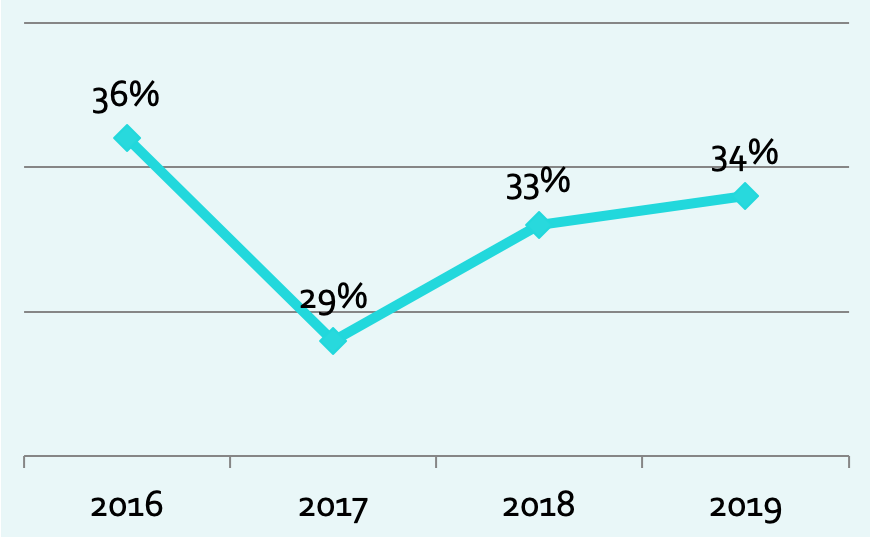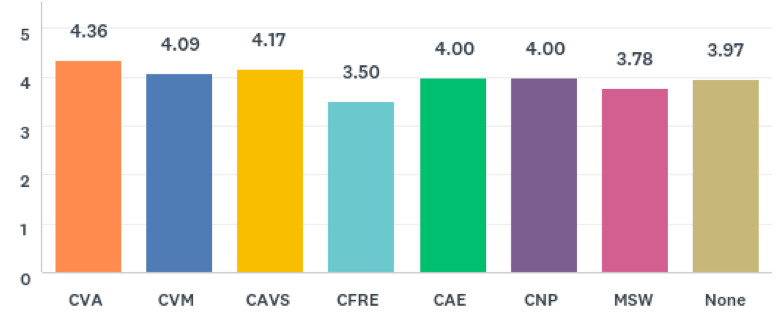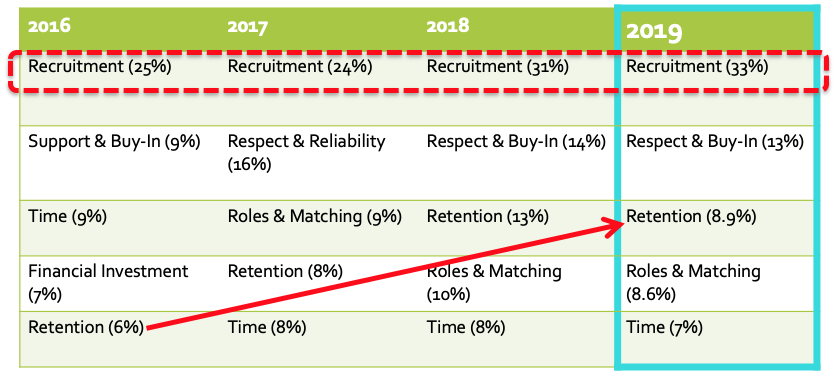
Beware of These 6 Trends Lurking in Your Volunteer Program
Over the past four years, we’ve collected a significant amount of data on the business of the volunteer program. Over 5,000 leaders of volunteers in 18 countries have taken our annual Volunteer Management Progress Report survey and we’ve all learned so much about our strengths and challenges as a sector.
We’ve also been able to share our insights with scholars interested in the nonprofit sector in a recent journal article.
As, we move into our fifth annual survey, I thought it might be interesting to reflect back on what we’ve learned over the past four years.
6 Volunteer Program Trends: A Cause for Concern
Below are some of the most troubling volunteer program trends we’ve tracked over the past four years. They may impact our ability to move forward as a sector and get the results our organizations are seeking.
Many have remained relatively consistent, regardless of who took the survey. This leads us to believe these accurately represent the field as a whole.
Trend #1: Our Field of Professionals is Fairly Homogenous, Except for Age
The demographic breakdown has remained consistent over four years. The following is the make-up of respondents in the most recent survey:
- Female 88% (91% in 2018, 88% in 2017)
- Caucasian/White 91% (91% in 2018, 89% in 2017)
- Highly Educated
- BA Degree 49% (same in 2017/16)
- Masters/Professional/PhD Degree 27% (29% in 2018, 28% in 2017)
- Full Time Employee 83% (84% in 2017, 79% in 2016)
- Paid Employee 90% (92% in 2018/17)
- No Professional Certification 66% (67% in 2018, 71% in 2017)
The one exception, where we differ from one another, is our generational affiliation. Today’s leaders of volunteers reflect all ages and generations.
Respondent Ages Volunteer Management Progress Report 2019

Why it Matters
It’s in the best interest of agencies to attract a diverse range of volunteer talent and, when possible, to reflect the communities they serve. When the field lacks diversity, we have to wonder whether that may impact which communities are attracted and invited to service.
Trend #2: The Volunteer Program is Most Often Led by “Coordinators” versus “Directors”
Despite the level of responsibility often required of these professionals, leaders of volunteer most often have the term “Coordinator” in their job title. The breakdown is as follows:
- Coordinator 36% (41% 2018, 43% 2017, 39% 2016)
- Manager 27% (25% 2018, 26% 2017, 27% 2016)
- Director 16% (17% 2018, 16% 2017, 19% 2016)
Also, there is no logical correlation between job title and program budget. You might expect that those with the director title have a larger budget – but it’s not the case, and is in fact the opposite with organizational budget.
Why it Matters
The job title “coordinator” often correlates with lower pay, even when the position includes a fair amount of accountability and responsibility. It’s not clear if there is job equity between volunteer management professionals and others (e.g., development staff) at nonprofits or if staff have job titles that truly match their vital roles.
Trend #3: Only About Half of Leaders of Volunteers Focus Most of Their Time on Volunteers
Many leaders of volunteers juggle more than one task, and only about half spend three quarters to all of their time on volunteer management. However, while eighty-three percent of respondents work full-time, only twenty-nine percent focus entirely on volunteer coordination.
Over the past four years of the survey, this trend has remained relatively consistent. In 2019, fifty-four percent of staff spent three quarters or more of their time on volunteer management, down from fifty-six percent three years ago.
Percentage of Time Spent on Volunteer Program Administration

Why it Matters
If volunteer retention and recruitment are currently core issues for organizations (see below), they may need to devote more time and resources to address the issue. A part-time staffer rarely has the necessary time to do it all.
Trend #4: Many Leaders of Volunteers Don’t Know How Much Budget the Agency’ Spends on Volunteers
In the US, one-third (29%) of respondents reported annual budgets of $1-$5,000 set aside for the volunteer program (not including staff salaries and benefits), down three percent from last year. The median program budget is $5,001-$10,000.
Eight percent of programs had no budget set aside for the volunteer program, and twenty-three percent did not know their program’s budget.
The trend was similar in other countries, as well. Here’s the breakdown of those who could not report their budgets because they did not know the amount of funds set aside.
- United States 23%
- Canada 27%
- Australia 29%
- United Kingdom 32%
Why it Matters
Line item budgets tell the story of a program, and when there is no visible budget, a false impression is given that volunteers and supporting them is free. In addition, if the leaders don’t know what it is, they can’t advocate for additional resources. Even if they don’t have authority to approve purchases, those who manage programs should have input into how, and to what level, they are funded.
Trend #5: Only About One-Third Hold Any Professional Certification
While most leaders of volunteers are highly educated, only thirty-four percent hold any kind of professional certification in volunteer or nonprofit management. We asked about the following credentials, most commonly found in the sector:
- CVA – Certified in Volunteer Administration
- CAVS – Certified Administrator of Volunteer Services
- CFRE – Certified Fund Raising Executive
- CAE – Certified Association Executive
- CVM – Certified in Volunteer Management
- CNP – Certified Nonprofit Professional
- MSW – Masters in Social Work
Percent Who Hold At Least One Certification in Nonprofit or Volunteer Administration

Why it Matters
There is a correlation between professional credentialing and volunteer capacity. In fact, those with a certification specifically in volunteer management (CVA or CVM, or CAVS) are more likely to report that volunteer opportunities were filled at their organization.
Certification Held x Percentage of Open Vol Opportunities Filled
(1 – 0%-20%, 2 – 21%-40%, 3 – 41%-60%, 4 – 61%-80%, 5 – 81%-100%, 6 – Had to turn people away)

Trend #6: Volunteer Retention is a Growing Problem
While volunteerism is booming, it appears that volunteers may not be staying long.
We asked respondents to share their biggest challenge in their own words. Specifically, we asked “What’s your #1 single biggest volunteer management challenge right now? Please be as detailed as possible. (Please go beyond a few words. The more specific you are, the more clearly we can understand your obstacles.)”
The following were the most frequently cited:
- Recruitment – Finding the right volunteers for specific roles and needs
- Respect and Buy-In – From co-workers and leadership
- Roles & Matching – Designing roles & matching volunteer and organization’s needs
- Retention – Longer time volunteers and fulfilling commitments to service
- Time – Managing competing and multiple priorities
Retention as a top challenge fell four percent over the previous year, but remains in third place reinforcing what many leaders of volunteers report anecdotally – there is evidence that it may be getting harder to find and keep volunteers engaged, particularly over longer periods of service.
Lack of the ability to keep volunteer engaged may also be why volunteer recruitment has risen eight percentage points in the past four year and remains the primary challenge year over year.
Top Challenges for Leaders of Volunteers

Why it Matters
Higher turnover rates may be due to lower rates of satisfaction in volunteers which may, in turn, impact whether volunteers quit volunteering at one agency or quit volunteering altogether. Volunteerism is a vital component of organizational and community sustainability. So, we can’t afford to ignore this troubling trend.
Wondering What the Trends Look Like for 2020?
Make Your Voice Heard & Take the Survey Now
Early next year, we’ll be sharing new trends for professionals who lead, manage, and coordinate volunteers. But, we need your help to do so.
If you work with volunteers, don’t miss your chance to participate in this year’s “state of the industry” study. It’s the largest crowdsourcing of volunteer administration data in the world.
We will continue to track the important trends above and, in this special edition, the survey will include questions about the following:
- Current capacity levels for volunteers placed around the world
- Training requirements for new and continuing volunteers
- Current technology platforms, tools, and frequency of use
- Top challenges for leaders of volunteer management professionals
- Salary & budget trends, cross tabbed by agency characteristics
I’m asking all my readers to help spread the word about the 2020 Volunteer Management Progress Report. The more of you participate, the more information we have to advocate for our profession!
As a bonus, everyone who completes the survey will be invited to a free “sneak peek” webinar on January 9, 2020. The survey takes less than 15 minutes to complete.
Take the Survey Now!
Don’t delay. The deadline is November 26, 2019.








Leave A Comment